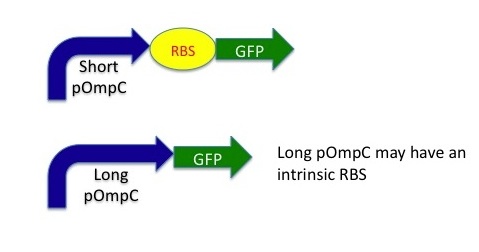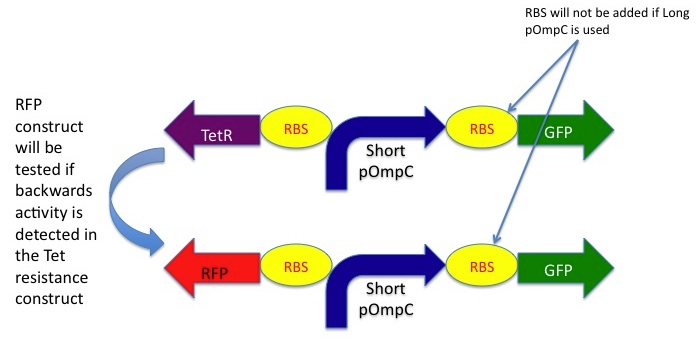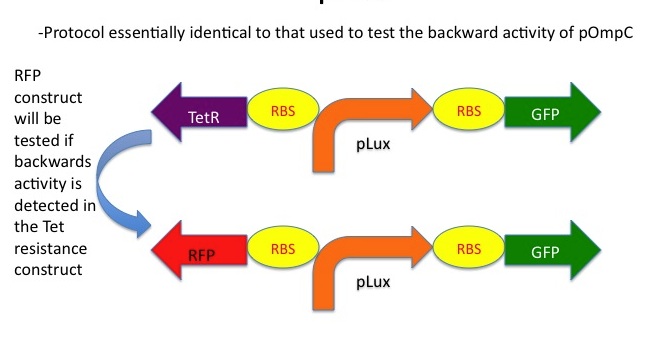Difference between revisions of "XOR gate design involving Omp system"
| Line 31: | Line 31: | ||
==Possible hash function?== | ==Possible hash function?== | ||
| + | |||
| + | ==References== | ||
Revision as of 18:33, 26 May 2009
Contents
The Omp system in nature
XOR gate design and concept
If all the components work as expected, the above construct will exhibit XOR gate properties. This design relies on a couple of assumptions:
1. When both inputs A (high osmolarity) and B (30C6), the activities of the two promoters should negate each other and no output should be produced.
2. When only one input is present (either high osmolarity or 30C6), the activity of the induced promoter should be able to reach the GFP gene despite the physical separation (the uninduced promoter) between the two components.
Testing the pOmpC promoter
Characterizing pOmpC
Two sets of primers were used to clone pOmpC because there are 80 bases between the end of pOmpC and the start codon of OmpC that we do not know the function of. The region could contain an intrinsic RBS, even though this was not evident from simply comparing the sequence of those 80 bases to the consensus RBS sequence. As a result, we decided to clone a long and a short version of pOmpC then test those with downstream GFP and RBS-GFP respectively.
Is there any backwards activity?
Backwards activity in either pLux or pOmpC would be detrimental to the design of the XOR gate because an output would still be produced if both inputs are provided.
The first test will be done with Tet resistance placed upstream of both the pOmpC and pLux promoters because Tet resistance has been found to be a sensitive way to measure backwards activity in promoters. If Tet resistance is expressed from the backward activity of pOmpC, then RFP will be used, as this is a less sensitive test for backwards activity.



